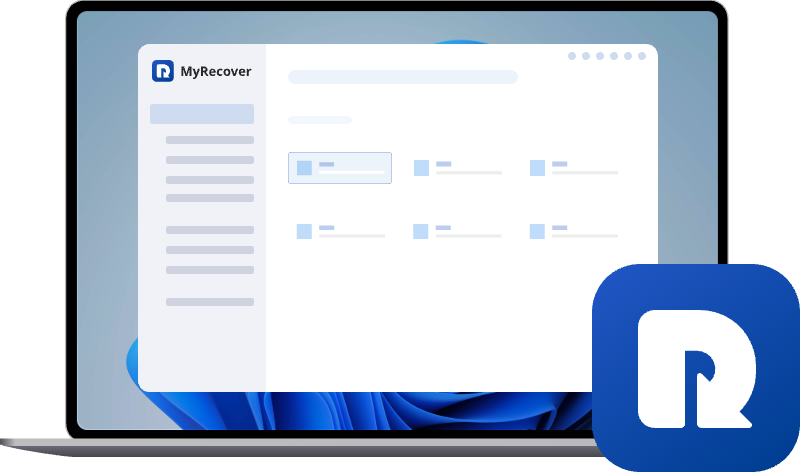Solved: Show Hidden Files and Folders Not Working in Windows 10 / 11
Sometimes, hidden files and folders may not appear in Windows 10 or Windows 11, even after enabling the "Show hidden files" option. This guide explains common causes, such as system settings, folder options, and malware interference, and provides clear, step-by-step solutions to restore hidden file visibility.
Show Hidden Files Button is Not Working on Windows10
Hello recently I tried to access the appdata folder and found out that the show hidden files button is not working. Every time I click it will not display the check mark. Can anyone please help?
Why "Show Hidden Files and Folders" not Working on Windows 10 or 11?
Hidden files and folders are system or user files that Windows keeps out of normal view to prevent accidental modification or deletion. These files are not normally visible in File Explorer unless the "Show hidden files, folders, and drives" option is enabled in Folder Options. They can include important configuration files, system data, or personal files that users have manually marked as hidden.
However, sometimes even after enabling this option, hidden files may not appear. This can be frustrating, especially when important files seem lost or inaccessible. Understanding the underlying causes helps determine the right solution.
- Folder Options Settings Not Applied Properly: Sometimes changes in Folder Options don’t take effect immediately or get reset.
- Corrupted System Files or Registry Issues: Problems in system files or registry entries can prevent Windows from displaying hidden items.
- Malware or Virus Interference: Certain malware can hide files or override Windows’visibility settings.
- Incorrect File Attributes: If files are marked as both hidden and system, they may require additional settings to become visible.
How to Solve "Show Hidden Files Not Working or Showing" Issue?
Now, we will share you with step-by-step solutions to restore hidden files in Windows 10 and 11, based on the possible causes of "show hidden files and folders not working" in Windows.
1. Restart File Explorer
Sometimes changes in Folder Options don’t take effect immediately. Open Task Manager with "Ctrl + Shift + Esc", find Windows Explorer, right-click it, and select "Restart". This refreshes the interface, and hidden files should now be visible.
2.Check Folder Options Settings
To ensure Windows is set to show hidden files, you need to verify Folder Options. Open File Explorer, go to "View > Options > Change folder and search options", then switch to the "View"tab. Make sure:
"Show hidden files, folders, and drives” is selected.
"Hide protected operating system files” is unchecked.
Click "Apply" and "OK". After this, hidden files and folders should appear in File Explorer.
3. Run System File Checker (SFC)
Corrupted system files may prevent hidden files from displaying. Open Command Prompt as Administrator and run: sfc /scannow
The tool will scan and repair corrupted system files. Once completed, hidden files that were previously blocked may appear.
4. Check Registry Settings
Sometimes hidden files may remain invisible because the registry settings that control file visibility are incorrect. To fix this, you can manually edit the registry to ensure Windows displays hidden files.
Press "Win + R", type "regedit" to open "Registry Editor".
Navigate to:
HKEY_LOCAL_MACHINE\SOFTWARE\Microsoft\Windows\CurrentVersion\Explorer\Advanced\Folder\Hidden\SHOWALL
Make sure that "Data for CheckedValue" is set to (1).
If not, right click it, select "Modify..." and set it to (1). After this, Windows will no longer prevent hidden files from being displayed.
5. Scan for Malware or Viruses
Malware can hide files or override visibility settings. Run a full system scan using Windows Defender or a trusted antivirus program. Removing any threats may restore hidden file access.
6. Modify File Attributes Manually
Sometimes files remain invisible because they are marked as both hidden and system. To make these files visible, you can manually change their attributes using attrib command. Open Command Prompt, and run the command: attrib -h -r -s /s /d E:\*.*
Replace E with the actual drive letter of your drive. This command removes hidden, read-only, and system attributes for all files and folders, making them visible in File Explorer. After this, most previously invisible files should appear.
7. Recover Hidden Files via Professional Data Recovery Software
If files still don’t appear after you tried the above methods, they may have been accidentally deleted or lost. In such cases, using professional data recovery software is the safest solution. MyRecover is highly recommended for Windows 10 and 11, as it can scan drives thoroughly, restore hidden or lost files, and preview content before recovery.

- 500+ Devices Supported | SSD, HDD, USB Flash Drive, SD Sard, etc.
- 1000+ File Formats Supported | PNG, MP4, MP3, TXT, ZIP, MSG, etc.
- 500+ Data Loss Scenarios | Deletion, Format, System Crash, Virus Attack, etc.
Step 1. Launch MyRecover after installation. On the main interface, you’ll see a list of all available drives and external devices connected to your computer.
Step 2. Choose the drive where the "show hidden files and folders" not working issue occurs. Click "Scan" to begin the scanning process.
Step 3. After scanning, all recoverable files will be displayed in the results window. Use the filter options (file type, size, date) or the search bar to quickly locate your lost files. Click on a file to preview it before recovery, ensuring you select the correct version.
Step 4. Tick the checkbox next to the files or folders you wish to recover. Click "Recover" to restore them.
Step 5. Choose a secure storage location (different from the original drive) to avoid overwriting lost data.
Generally speaking, the recovery process can be completed in seconds or minutes if you are recovering a small number of files. If you try to recover a large amount of data, please wait patiently. Once completition, the software will pop out a mini summary window to tell how many files are successfully recovered and where they are saved now.
Verdict
The "Show hidden files and folders" not working in Windows 10/11? It can be caused by anything from incorrect settings to corrupted system files, malware, or special file attributes. By following the step-by-step fixes above, you should be able to restore access to your hidden files.
If none of the manual methods work, don’t panic — a professional tool like MyRecover offers the most reliable way to scan, locate, and recover hidden or lost files quickly and safely.


